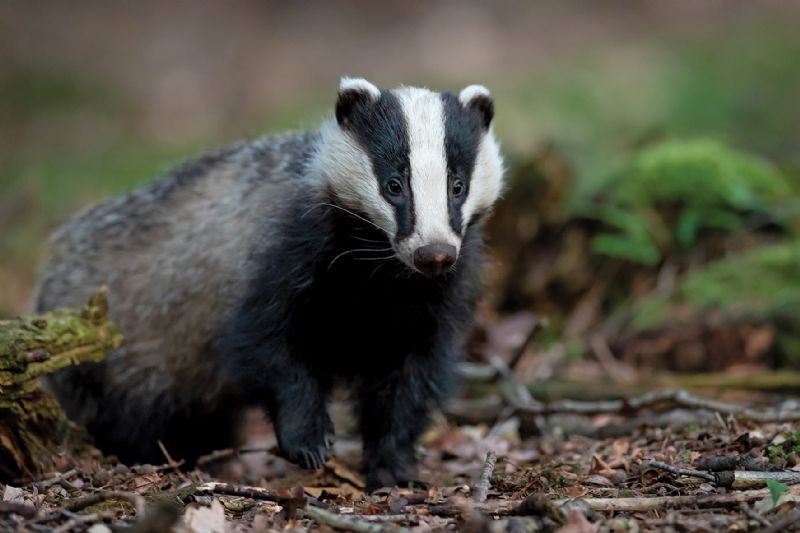- Home
- News, Articles & Reviews
We are hiring! Please click here to join our growing magazine delivery team in Gloucestershire!
Areas
Pets & Wildlife
Archive

Badgers below
All Areas > Pets & Wildlife > Wildlife Matters
Author: Dorothy Glen, Posted: Wednesday, 25th January 2023, 09:00
Tucked away underground in cosy chambers snug with clean bedding, badger cubs are being born. It may seem early in the year for this, as these tiny new creatures are entering a wintry world, but they stay in their warm burrows until ready to emerge at 8-10 weeks old into the welcoming spring.
At 12 weeks they are weaned onto the abundance of insects, worms and plant foods that the spring brings and have months to fatten up before the next winter.
They don’t open their eyes until they are five weeks old
During that initial 8-10 weeks underground, they may be safe from the harsh world above the burrow, but they are helpless to the threats that come from within it. The tiny cubs, one to five in a litter, are around 12cm long when born and have fused eyelids. They don’t open their eyes until they are five weeks old.
They are defenceless, and although badgers live in social groups, cubs are at risk if they threaten the dominance of high-ranking family members. Cubs born to subordinate sows may be killed by dominant females. Resident males may also kill cubs if unsure of their paternity (around half the cubs born to a colony can be fathered by non-resident boars).
However, once they have survived this vulnerable time, the cubs can go on to reach adulthood and live for 15 years in the wild.
You may know where your local badger sett (den) is located by spotting some of the entrances, but you may not realise the extent of the tunnels below the surface. Passages range from 35-81m long, and setts have up to 50 entrances.
These vast networks are passed down through generations of badgers over decades, and can accommodate several families at a time – as well as the occasional fox or rabbit! Each family has its own passages and chambers for sleeping and nesting, and they take good care of them.
They clear out old bedding regularly
Badgers are incredibly clean; they clear out old bedding regularly and bring in as many as 30 bundles of grass, moss, bracken and leaves on a dry night. During the winter, when finding new bedding is difficult, they may take their used bedding outside on sunny days and take it back in later after an airing.
Should an unfortunate badger expire in a sleeping chamber, the family will block the chamber off and dig a new one, or even move their dead outside and bury them.
For the cubs that manage to not fall victim to that fate early on, the future holds lots of playful new experiences as they discover life above ground. I’ll write more about that happy thought in next month’s article.Other Images
Copyright © 2025 The Local Answer Limited.
Unauthorized use and/or duplication of this material without express and written permission from this site's author and/or owner is strictly prohibited. Excerpts and links may be used, provided that full and clear credit is given to The Local Answer Limited and thelocalanswer.co.uk with appropriate and specific direction to the original content.More articles you may be interested in...


© 2025 The Local Answer Limited - Registered in England and Wales - Company No. 06929408
Unit H, Churchill Industrial Estate, Churchill Road, Leckhampton, Cheltenham, GL53 7EG - VAT Registration No. 975613000You are leaving the TLA website...
You are now leaving the TLA website and are going to a website that is not operated by us. The Local Answer are not responsible for the content or availability of linked sites, and cannot accept liability if the linked site has been compromised and contains unsuitable images or other content. If you wish to proceed, please click the "Continue" button below:




